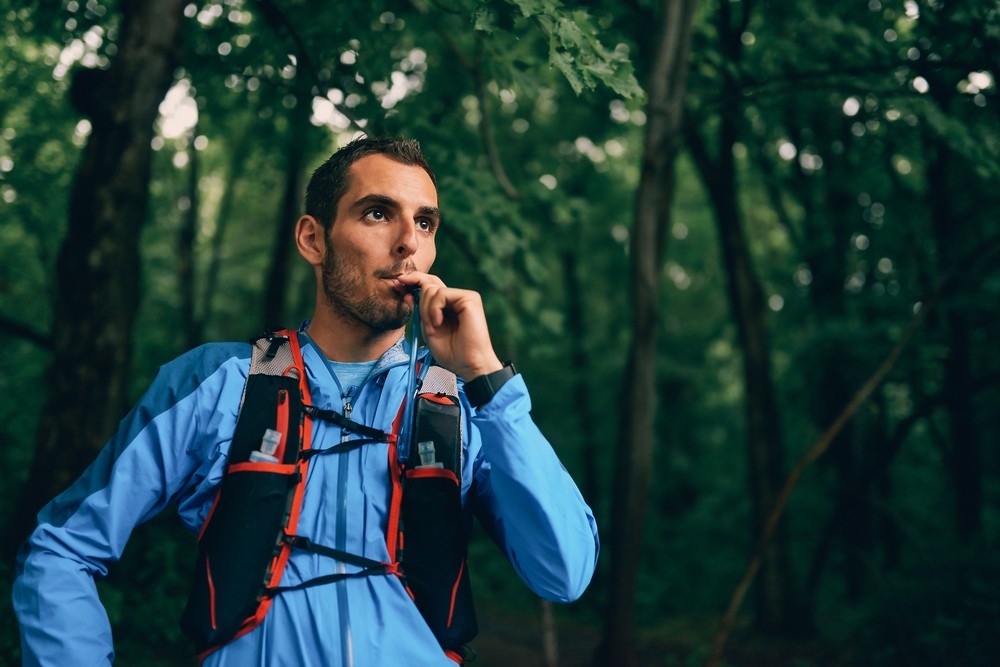Hydration is a controversial topic in the marathon and ultra marathon world. Is a pre-planned hydration strategy best? Or maybe you should drink to thirst? Or how about you do a sweat test? Fortunately, hydration does not have to be this complicated. Recent research has debunked a whole range of myths about hydration during long runs races >3 hours.
We’ll get straight into the practical recommendations so you can use these in your training and racing as soon as possible.

Pre-race hydration
Start the race in a euhydrated state. That is, not dehydrated and not overhydrated. If you are rushing to the bathroom prior to the race, you may have had too much water. If you have a head ache, or have a dry mouth/lips, you probably need more. Avoid hydrating in the last 20 minutes before a race as the liquid will sit in your stomach and increase risk of early on GI upset.
Hydration strategy during the race
Three simple words. Drink To Thirst. No sweat tests. No pre-determine hydration strategy. Just drink liquid when you feel like it. Evidence shows this is by far the best approach and that having a pre-determined hydration plan can lead to over-hydration and hyponatremia (low salt). Only in circumstances where limited water is available for long stretches of a race and the environment is hot should a pre-planned hydration strategy be implemented.
Avoid excessive volume intake
Drink small amounts regularly. Avoid not drinking for 2 hours and then downing 700ml of water. This strategy will quickly lead to gastrointestinal upset as the liquid will sit in your stomach for an excessive amount of time.

Salt tablets are unnecessary
Salt tablets are popular in the sport of running. They have long been used to prevent/treat cramps and prevent/treat hyponatremia. However, we now know they are ineffective at doing either of these. Aim to consume sodium based on food cravings. If you are craving salt and vinegar chips, have some. The sodium from food is more than enough during an ultra-marathon (read about race nutrition here). Furthermore, avoid using the colour of your urine as a reflection of salt loss. This is an inaccurate measure and is not a reason to take a salt tablet.
Acclimatise for hot environments
If you are running is in hot or humid conditions, prior heat acclimation is important. Acclimating to heat increases your blood plasma volume which in turn reduces risk of dehydration. However, drinking to thirst is remains the gold standard for running hydration even in hot and humid environments.
Not all fluid loss needs to be replaced
To maintain proper hydration, a runner does not need to replace all fluids lost. Body mass loss (of up to 2%) during an ultra-marathon is expected and in a large proportion is due to oxidation of substrates (burning fuel). Furthermore, water is produced when carbohydrates are used by the body. This water does not need to be replaced as it is not involved in dehydration or blood volume. The amount you are urinating or the colour of your urine is not a good measure of dehydration and should not be used as a sign to drink more/take salt tablets.
We want to hear from you!
Let us know about your hydration strategy and what has worked for you? Do you drink to thirst or have you tried hydration plans? Thanks for reading 🙂
References
Costa, R. J., Knechtle, B., Tarnopolsky, M., & Hoffman, M. D. (2019). Nutrition for ultramarathon running: Trail, track, and road. International journal of sport nutrition and exercise metabolism, 29(2), 130-140.
Hoffman, M. D., Snipe, R. M., & Costa, R. J. (2018). Ad libitum drinking adequately supports hydration during 2 h of running in different ambient temperatures. European journal of applied physiology, 118(12), 2687-2697.